Recognize hay fever and treat it effectively
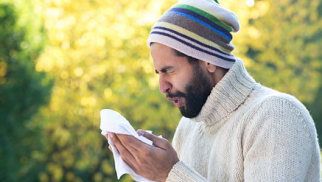
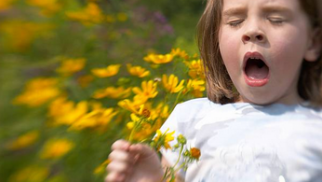
Hay fever is a name of a seasonal allergy occurring as a result of exposure to the pollen of different plants. The disease manifests in a number of symptoms from the part of the respiratory system, eyes, skin, and sometimes, the digestive system, if pollen is ingested.
The main manifestations include nasal and eye mucosa swelling, stuffy nose, clear discharges from the nose, sneezing, coughing, suffocation, lost smell, itching, and skin rashes. If the disease is left untreated, it causes a lot of discomfort and progresses. It can transform into bronchial asthma.
Short information about pollinosis (hay fever)
General information
Usually, the disease develops in childhood or teenage years. It is a cyclical disease: it flares-up during the flowering period when there is a high content of allergen in the air and goes away with the end of the blossoming season. According to statistics, 10-20% of the total population suffers from a seasonal allergy.
Hay fever is mostly widespread in dry and warm climates. It is explained by the fact that there is a greater variety of flowering plants with different periods of flowering. For instance, when one type of plant stops flowering, another one starts its pollinating season, so there is a longer period when people prone to pollen allergy suffer from flare-ups.
Interestingly, although there are fewer plants in the cities, their inhabitants are more likely to develop pollen allergies than villagers.
Women are more susceptible to a seasonal allergy, probably, because of hormonal changes related to menstruations, pregnancy, and so on. The incidence of hay fever in the general population is affected by environmental, climatic, and geographic factors.
Hay fever causes
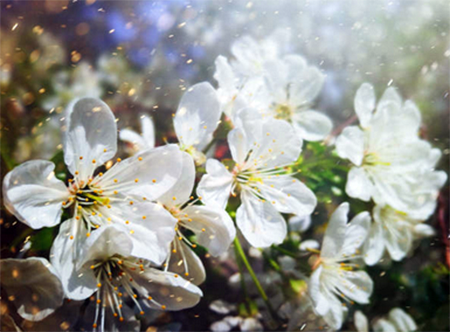
Allergies occur not in all people. They develop only with heightened sensitivity to certain substances or environmental factors. With a seasonal allergy, such an environmental factor is pollen falling off the flowering plants. Pollen is very small, even microscopic. It can be around 10 microns that is 100 smaller than 1 millimeter. This invisible allergen penetrates the respiratory system, skin, and mucous membranes provoking a protective system of the body resulting in allergic symptoms. Namely the protection of the body results in inflammation, nasal and eye discharges, reddening of the mucosa, and so on. Through these mechanisms, the body tries to wash out the allergen from the body considering this harmless substance dangerous bacteria or virus. This is an incorrect response of the immune system which is hereditary.
The hay fever flare-up matches the flowering period of plants to which a particular individual is allergic:
- Individuals allergic to hazel, oak, alder, and birch pollen suffer from flare-ups of seasonal allergies in April and May.
- In June and July, the flare-up occurs in individuals allergic to pollen from cereals, e.g. phleum, foxtail, fescue, wheatgrass, and bluegrass.
- In August and September, individuals allergic to ragweed, quinoa, and wormwood start showing the symptoms.
The severity of the flare-up highly depends on the weather:
- In windy and dry weather, there is a high content of pollen in the air so the symptoms of hay fever worsen.
- In rainy and damp weather, pollen falls down so its content in the air drops, and the symptoms are less intense.
Now it is considered that heredity is the main factor responsible for allergies development. The risk of developing an allergy is 50% if both parents have particular or different types of allergies. The risk is around 25% if only one parent has an allergy. And if none of the parents have allergies, the likelihood of the disease development in the child is around 10%. However, the risk can also increase if a child at an early age is constantly exposed to allergens, is malnourished, and/or is frequently sick with viral diseases.
Hay fever symptoms
The disease develops in two stages. The first stage includes transient symptoms:
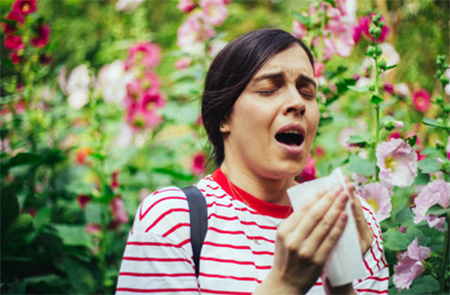
- Itching in the nose, throat, trachea, ears, and eyes;
- The eyelids become swollen and reddish;
- Attacks of repeated sneezing occur;
- Clear nasal discharges occur;
- Allergic conjunctivitis (eye inflammation) develops and results in sensitivity to bright light, watery eyes, and the sensation of sand in the eyes.
The second phase begins in 6-8 hours after the exposure to an allergen. It is distinguished by an enhanced inflammation reaction. The symptoms persist but several changes occur:
- The discharge from the eyes becomes purulent;
- Body temperature may rise to 37.2 C (99 F).
- Some patients develop urticaria (skin rash) or troubled breathing resembling asthma attacks.
- In rare cases, Quincke’s edema, dermatitis (including atopic), cystitis, and inflammation of the external genitalia can develop.
Seasonal allergy can be accompanied by “pollen intoxication” resulting in fatigue, irritability, loss of appetite, depressive mood, and migraines. If the allergic individual somehow swallows pollen (for instance, with honey), nausea and vomiting accompanied by acute abdominal pain may occur.
How is hay fever diagnosed?
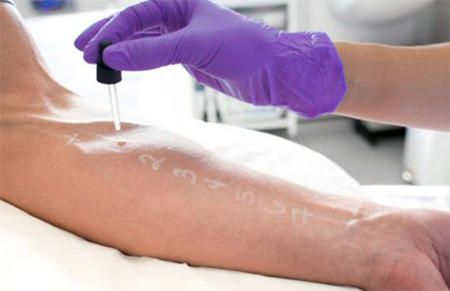
The diagnosis of hay fever is made based on the typical picture of the disease, i.e. the seasonal character of flare-ups, hereditary predisposition, visual/physical examination by the ETN doctor, and additional tests, for instance, skin prick tests allowing to identify allergens to which this particular patient is sensitive.
Visual examination reveals the puffiness of the nasal mucosa and the narrowing of the nasal passages. When vasoconstrictor (typical anti-stuffiness sprays) nasal sprays are applied, the edema of the mucosa is maintained.
If the test confirms the presence of eosinophils on the mucosa, the allergic nature of the disease is confirmed. To detect the specific allergen provoking hay fever in this patient, a prick test or other tests with the use of possible allergens are made.
Hay fever treatment
First of all, exposure to the allergen should be reduced to the minimum for the whole flowering season. The allergic individual is encouraged to limit the time spent outdoors, particularly, in dry and windy weather. Windows and doors should be kept closed. Special air purifiers able to capture plant pollen can be purchased. It is also advised to refrain from eating certain foods that can cause cross-allergies (honey, and other products).
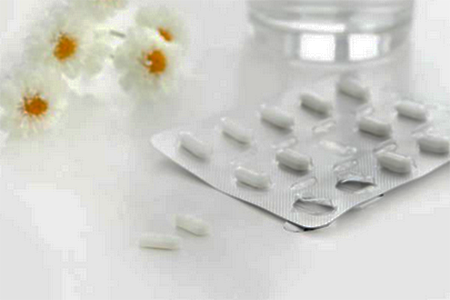
For the treatment of mild hay fever, oral and topical antihistamines are used. The recommended medicines are - astemizole, Fexofenadine, Loratadine, and topical sprays levocabastine and Azelastine.
For moderate hay fever, locally-acting glucocorticoids in form of nasal sprays are prescribed, for instance, Fluticasone, Beclomethasone, etc. In asthma, glucocorticosteroid inhalers are used. However, in suspected or confirmed viral, bacterial or fungal infections, corticosteroids must be used cautiously and only if the doctor approves.
In severe hay fever, topical glucocorticoids are combined with systemic antihistamines of the first generation such as Cyproheptadine. In a severely stuffy nose that is not relieved with corticosteroids, it is possible to use vasoconstrictor nasal sprays such as xylometazoline, oxymetazoline, and others but for no more than a week. The longer use of these medications can cause the development of nonallergic medicine-induced rhinitis.
Extremely severe hay fever with the significant narrowing of the nasal airways can require surgical intervention. The surgery implies partial removal of the turbinates. It can be done using a laser and cryodestruction.
The most effective treatment of allergy is considered allergen-specific immunotherapy. The therapy implies the injection of gradually elevated doses of the allergen into the patient's body. This results in a decreased sensitivity to the allergen. The therapy can be carried out along with taking medicines to cope with allergies. The major drawback of this method is that it can be performed only with the help of a narrow specialist and is quite costly. Besides, the results are not permanent, a course of therapy can help staying allergy-free for 3-5 years and the therapy should be repeated.
Hay fever prophylaxis
Individuals with hay fever are encouraged to take measures aimed at limiting contact with allergens:

- If possible, during the blossoming period, leave for another climatic zone.
- Patients are strongly discouraged from leaving the city and going to the countryside during the high pollen season.
- It is advised to ventilate the room in damp, windless weather. Or, you can install special window filters or air purifiers.
- Individuals with hay fever are advised to shower and wash their clothes (or at least, put them away from the room they are staying in) right away when coming home.
- During a flare-up, it is advised to rinse your eyes with clean water and rinse nose and gargle with saline several times a day to wash out the allergen from the mucosa.
- It is advised to avoid drying clothes outside after washing to avoid pollen settling.
Post by: Rachel Lewis, Senior Medical Advisor at Medibank, Sydney, New South Wales, Australia
(Updated at Apr 13 / 2024)
Periactin articles:
Some of the trademarks used in this Web Site appear for identification purposes only.
All orders are reviewed by a licensed physician and pharmacist before being dispensed and shipped.
The statements contained herein are not intended to diagnose, treat, cure or prevent disease. The statements are for informational purposes only and is it not meant to replace the services or recommendations of a physician or qualified health care practitioner. If you have questions about the drugs you are taking, check with your doctor, nurse, or pharmacist.